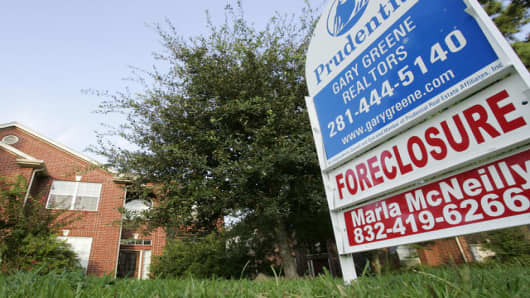U.S. residential foreclosure filings nearly doubled last quarter from a year earlier, and appear set to increase into 2008, a report said on Thursday.
Foreclosure filings for July-September rose to 635,159, representing one in every 196 households and a 30 percent jump from the second quarter, according to RealtyTrac, a marketer of foreclosure properties based in Irvine, California.
The level climbed in 45 out of 50 states in the quarter, led by Nevada, California and Florida, the report said. Little relief is expected as rising payments on some $650 billion in adjustable-rate loans from the current quarter through the end of 2008 will continue to pinch homeowners' budgets.
"Given the number of loans due to reset through the middle of 2008, and the continuing weakness in home sales, we would expect foreclosure activity to remain high and even increase over the next year in many markets," James Saccacio, chief executive officer of RealtyTrac, said in a statement.
Foreclosure filings recorded by RealtyTrac include default notices, auction sales notices and bank repossessions.
Foreclosures in Nevada last quarter increased 23 percent from the second quarter and were more than three times that seen a year earlier, with 16,817 filings on 12,982 properties, the company said. It had the highest rate of filings at one in every 61 households.



